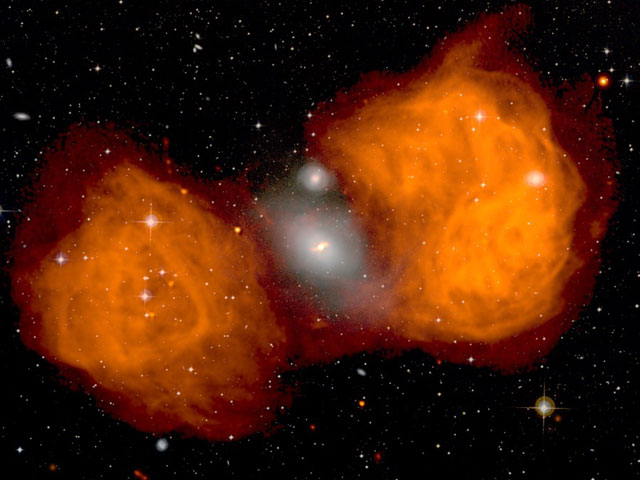The Giant Radio Lobes of Fornax A

Explanation:
Together, the radio lobes span over one
million light years --
what caused them?
In the center is a large but peculiar elliptical galaxy dubbed
NGC 1316.
Detailed inspection of the
NGC 1316 system indicates that
it began absorbing a
small neighboring galaxy
about 100 million years ago.
Gas from the
galactic collision has fallen inward toward the massive central
black hole, with
friction
heating the gas to 10 million degrees.
For reasons not yet well understood, two oppositely pointed
fast moving jets of
particles then developed, eventually smashing
into the ambient material on either side of the giant
elliptical galaxy.
The result is a huge reservoir of hot gas that emits
radio waves, observed as the orange (false-color)
radio lobes in the
above image.
The radio image is superposed on an
optical survey image of the same part of the sky.
Strange patterns in the radio lobes likely indicate
slight changes in the directions of the jets.
First Annual Radio Astronomy Image Contest
Authors & editors:
Robert Nemiroff
(MTU) &
Jerry Bonnell
(USRA)
NASA Web Site Statements, Warnings,
and Disclaimers
NASA Official: Jay Norris.
Specific
rights apply.
A service of:
LHEA at
NASA /
GSFC
& Michigan Tech. U.

